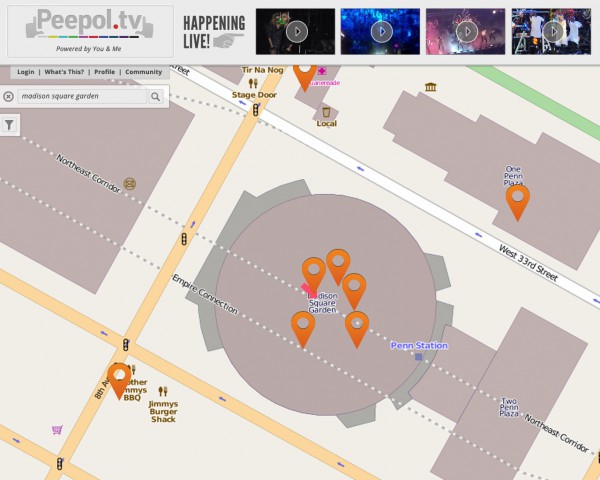
When student protestors took to the streets of Santiago last year, Felipe Heusser watched as the press covered the darkest side of that movement, seeming to ignore the kiss-ins and superhero costumes.
To give his fellow Chileans an unfiltered view, Heusser attached an iPhone to a balloon and sent it high above the streets, transmitting live video. Within an hour that feed had attracted 10,000 viewers, he said. “What’s even greater is we saw the mainstream media begin to embed the content we created in their own websites,” he said.
This serendipitous act of balloon journalism, along with many others, inspired the idea for Peepol.TV, a newly minted Knight News Challenge winner. Heusser will get $360,000 to build a social network for live citizen video, what one external reviewer described as “a channel guide for the entire Internet” — tagged, mapped, and searchable. Heusser’s co-founder is developer Jeff Warren, whose Public Laboratory has pioneered balloon and kite mapping. Independent designer Chris Rogers is also joining the project.
The team plans to build a smartphone app that ties in to the Peepol.TV network. Warren said they want to consider all the needs of a typical user; for example, if you’re an Occupy Wall Street protestor, you’ll want to be able to download an archive of the video if a cop seizes your device. You’ll want an app that launches fast and sips on battery juice for reliability in the field.
“An open-source, nonprofit-backed project, as opposed to a company doing this for profit exclusively — we’re thinking about these use cases that aren’t necessarily the No. 1 business decision,” Warren said.

After Heusser’s balloon idea first took off, so to speak, public interest waned. The aerial pictures were pretty but not very informational, “basically a bunch of dots of people several meters below,” Heusser said. So he and his colleagues at Ciudadano Inteligente, a Chilean NGO he founded, started working the ground, interviewing protestors on camera while simultaneously managing the bunches of balloons overhead. Heusser — like nearly all of this year’s Knight News Challenge winners — is not a journalist by training, but he had developed a sophisticated little newsgathering operation on the fly.
“We’ve been talking about it like an anchorperson,” Warren said. “There’s people out in the field shooting film, and then there’s an anchor person weaving together a story and presenting it to an audience, switching between videos.” The Peepol.TV team wants to write software that can let anchors create television-style broadcasts. They want to add Instagram-style filters to the video and music via SoundCloud’s APIs.
Heusser sees Peepol.TV being used in sporting events, concerts, traffic, or any place where lots of people are gathered for a common purpose. He wants to “democratize access to live content,” making it easy for someone to find out what’s happening nearby or to start shooting on a moment’s notice when news breaks. The problem with video streaming today, the reason so few people do it, he said, is “they don’t have the certainty that someone will see it.” People tweet, he said, because they know people will read that tweet. That’s why he thinks it’s important that Peepol.TV has social features like profiles, followers, and notifications. People need to know they have an audience.
It’s an ambitious undertaking that will be challenged, in part, by the limitations and variations of consumer hardware. Heusser said he would like to launch a product in a year. An early prototype of the software is live now, but there isn’t much to look at yet.